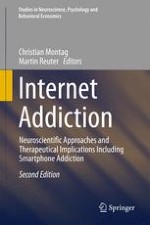The second edition of this successful book provides further and in-depth insight into theoretical models dealing with Internet addiction, as well as includes new therapeutical approaches. The editors also broach the emerging topic of smartphone addiction.
This book combines a scholarly introduction with state-of-the-art research in the characterization of Internet addiction. It is intended for a broad audience including scientists, students and practitioners. The first part of the book contains an introduction to Internet addiction and their pathogenesis. The second part of the book is dedicated to an in-depth review of neuroscientific findings which cover studies using a variety of biological techniques including brain imaging and molecular genetics. The third part of the book focuses on therapeutic interventions for Internet addiction. The fourth part of the present book is an extension to the first edition and deals with a new emerging potential disorder related to Internet addiction – smartphone addiction.
Moreover, in this second edition of the book new content has been added. Among others, the reader will find an overview of theoretical models dealing with Internet addiction, results from twin studies in the context of Internet addiction and additional insights into therapeutic approaches to Internet addiction.
